Album Covers with Their Heads in the Clouds
Discussing how cloud adorned records continue the tradition of depicting one of art's longest known subjects.
At the turn of the century, in 2001, tech giant Microsoft released an image of an idyllic rolling green hill against a bright blue sky filled with fluffy white clouds. This picture, originally photographed by Charles O’Rear, has since become one of the most recognizable images of the early Internet age, used as the default screensaver of billions of Windows XP computers. In the age of social media, in 2018, writer Charmaine Li noted in Another Mag that the hashtag #clouds had over 81 million posts on Instagram. That stat has since risen to 126 million as of 2023.
Humankind’s obsession with the beauty of clouds has been rendered by artists of all periods and movements, from phones to paintbrushes. Similarly, in music, artists across all genres have depicted clouds on their album covers. From hardcore group Turnstile to hip hop legend Drake, the late hyperpop icon SOPHIE, and record-breaking popstar Katy Perry. The right song, or even a whole album, can put listeners in a dreamlike state, or as the saying goes… put one’s “head in the clouds.”

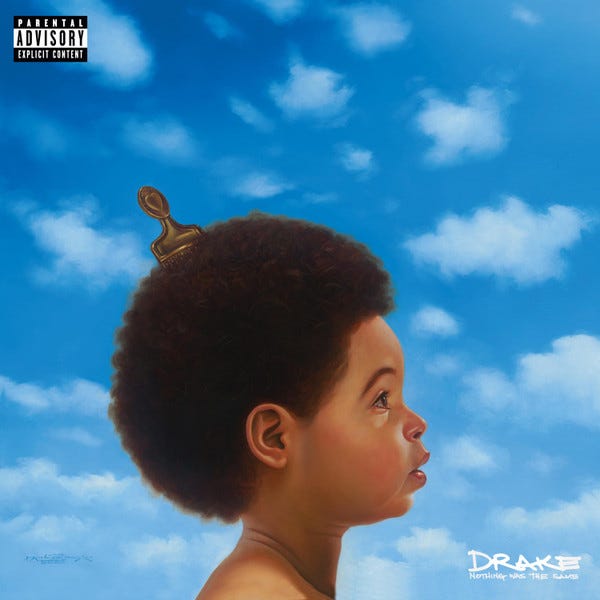
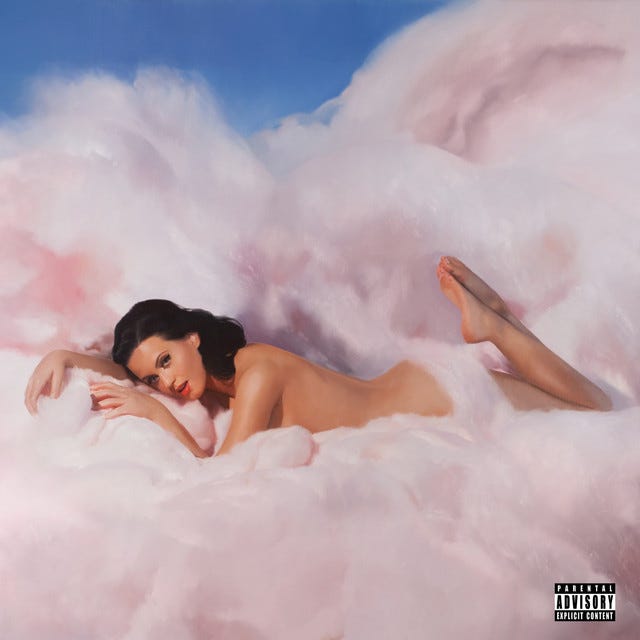
Before the word “cloud” was associated with the internet storage service we know today, its etymology harkens back to the Old English word “clud” meaning “mass of rock” or “hill.” It was in 1802 when British meteorologist Luke Howard scientifically classified clouds into the three general categories we visually know them as: stratus, cumulus, and cirrus (or, for ease of description, flat, fluffy, and wispy). Towards the end of the same century, artists like Claude Monet and Camille Pissarro founded the Impressionist movement, painting “plein air”, or outside, capturing scenes of everyday life with soft brisk strokes, which many times included the sky.
During the surrealist era, artists continued experimenting with clouds in their paintings, appropriate for dreamily unlocking the “unconscious mind,” one of the movement's core ideologies. One painter that comes to the forefront is Belgian artist René Magritte. We can see from pieces like The False Mirror (1928), The Son of Man (1946), and La Grande Famille (1963) clouds are a clear thematic visual symbol throughout Magritte’s work.
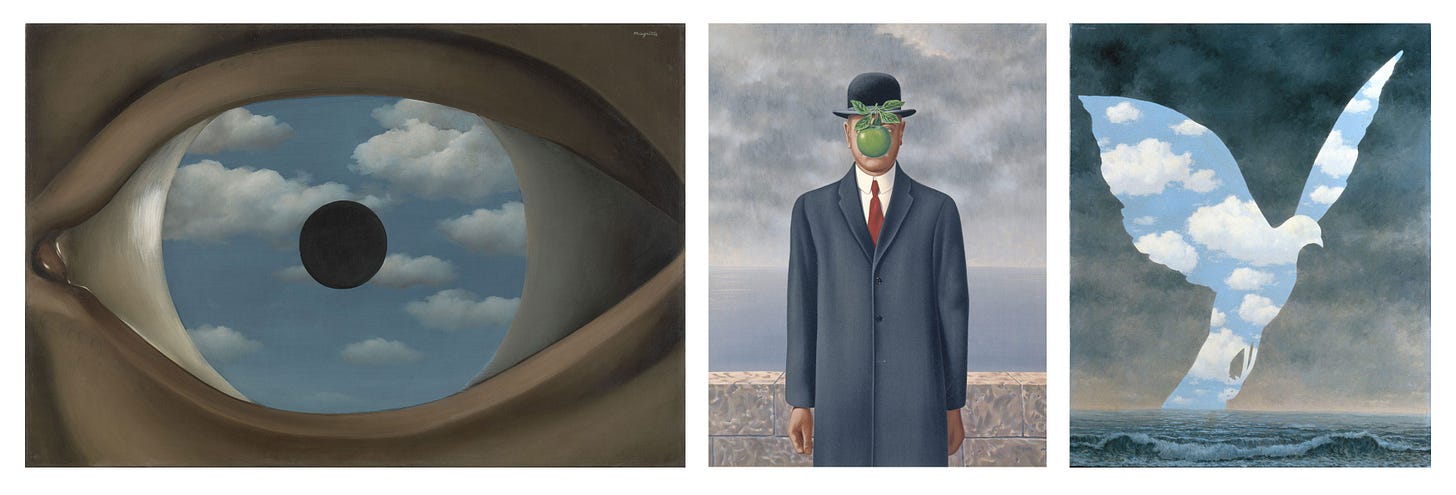
While more modernist than surrealist, Georgia O’Keeffe, who created art during the same period, also included clouds, as much as flowers, in her work. In Ram's Head, White Hollyhock-Hills (1935), O’Keeffe’s portrayal of the sky is a bit more melancholy than in Above the Clouds I (1963) and Sky Above Clouds IV (1965). Yet the skull and flower are reminiscent of the floating illusions seen in many surrealist works, think Salvador Dali, who also separately references clouds in his pieces Couple with Their Heads Full of Clouds (1936) and Man with His Head Full of Clouds (1936). This suspended trend continues on album covers like Divino Niño’s Last Spa on Earth and Ziemba’s True Romantic.
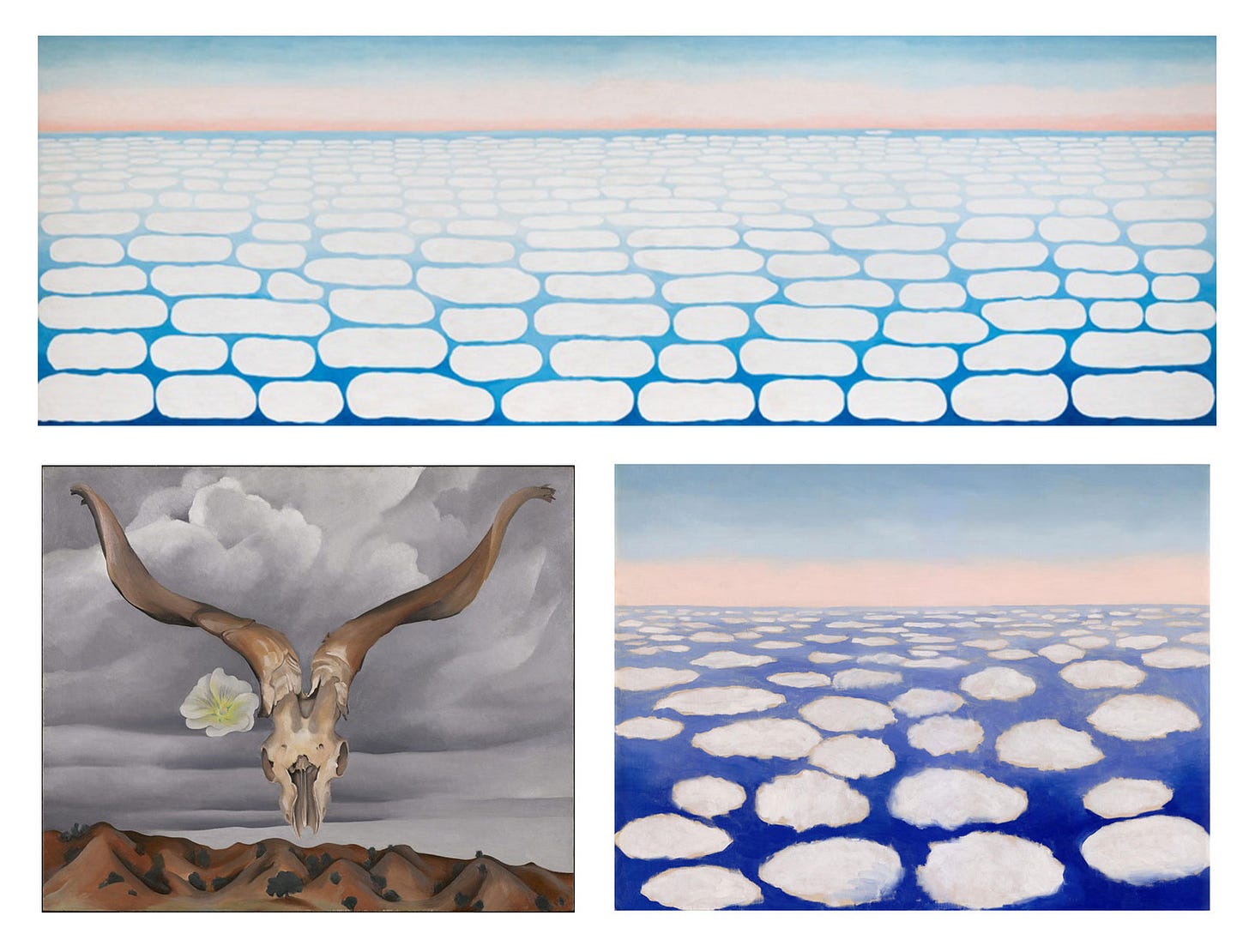
At the risk of listing every prior art movement, it’s fair to say that clouds have been one of art’s longest subjects. It’s a scene that anyone, regardless of age or background, can recognize and relate to, past, present, and future. And the baton has been passed onto record covers.
Find more cloud album art below.
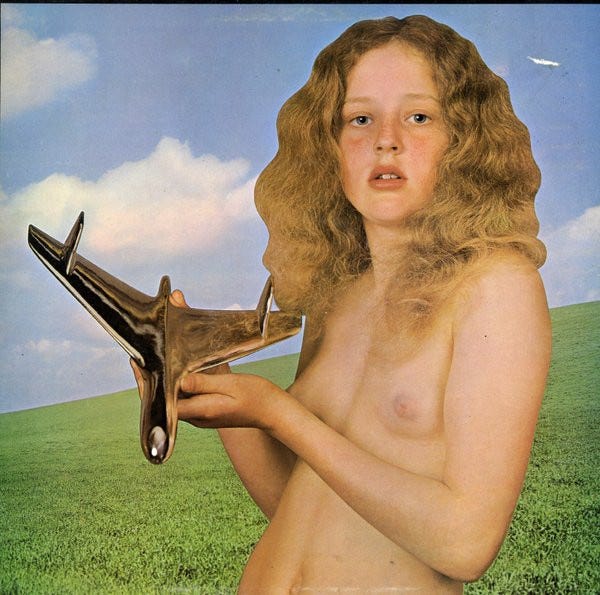


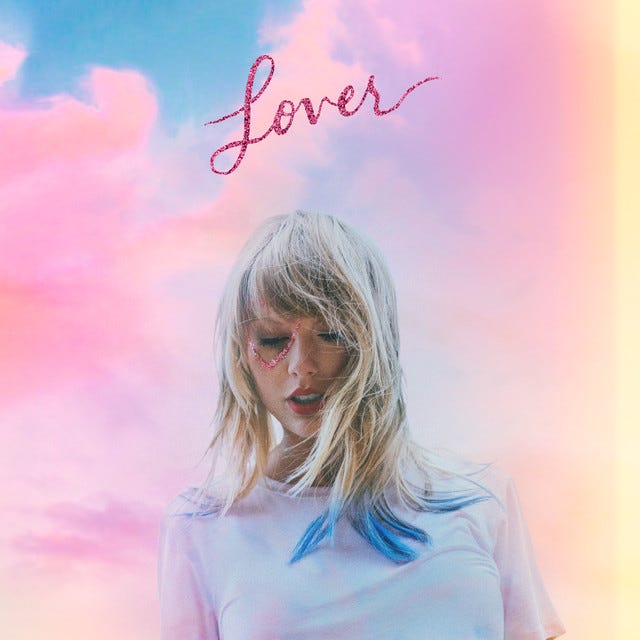
The Art of Cover Art is a free educational and inspirational resource. If you have $5/ month to spare, it would be helpful in furthering my research. Or, if you think a friend might enjoy this newsletter, the best way to pay it forward is by sharing!




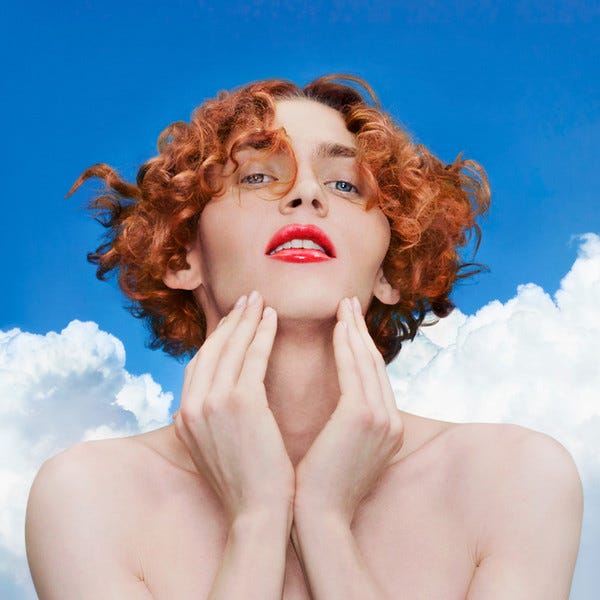

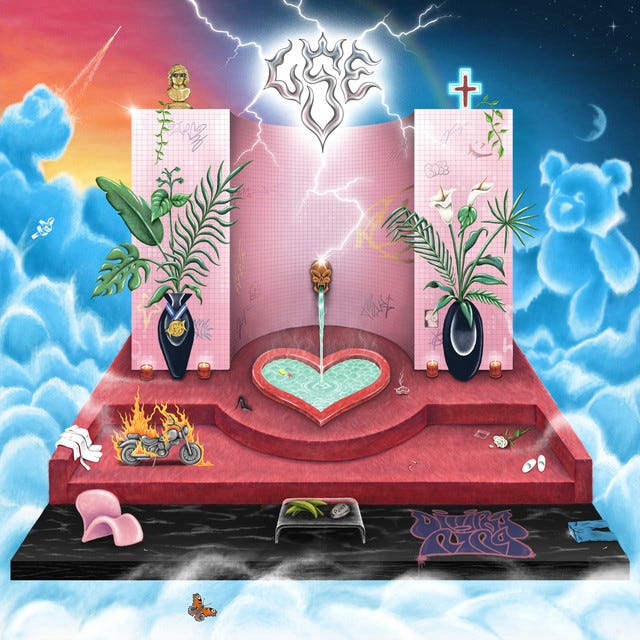


Amazing write up! Love the Selection of albums you chose.
My friend sent me this! Thanks for including my Lover cover🥰💗 so cool to be featured 💗🦋